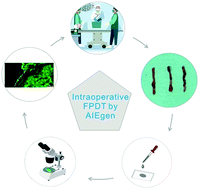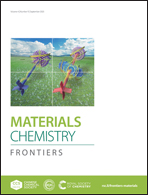Hexaphenyl-1,3-butadiene derivative: a novel “turn-on” rapid fluorescent probe for intraoperative pathological diagnosis of hepatocellular carcinoma†
Abstract
Herein, we report a novel fluorescent probe, hexaphenyl-1,3-butadiene derivative (ZZ-HPB-NC), with an aggregation-induced emission (AIE) feature, which shows a simple, highly selective, specific, and instant response to hepatocellular carcinoma (HCC). The fluorescence emission of ZZ-HPB-NC can be quickly turned-on in the intraoperative frozen-section slides of HCC specimens via a simple staining procedure, while paratumor cirrhosis, benign nodular tissue and normal liver tissue would not induce a change in its fluorescence. Compared to the most authoritative clinical method, i.e., haematoxylin and eosin staining, our method has better detection speed and accuracy for intraoperative frozen-section consultation. The results indicated that ZZ-HPB-NC represents an ideal marker for simply, quickly and highly efficiently distinguishing HCC cells from normal liver cells. ZZ-HPB-NC staining is an objective for intraoperative HCC diagnosis with potential clinical applications.



 Please wait while we load your content...
Please wait while we load your content...